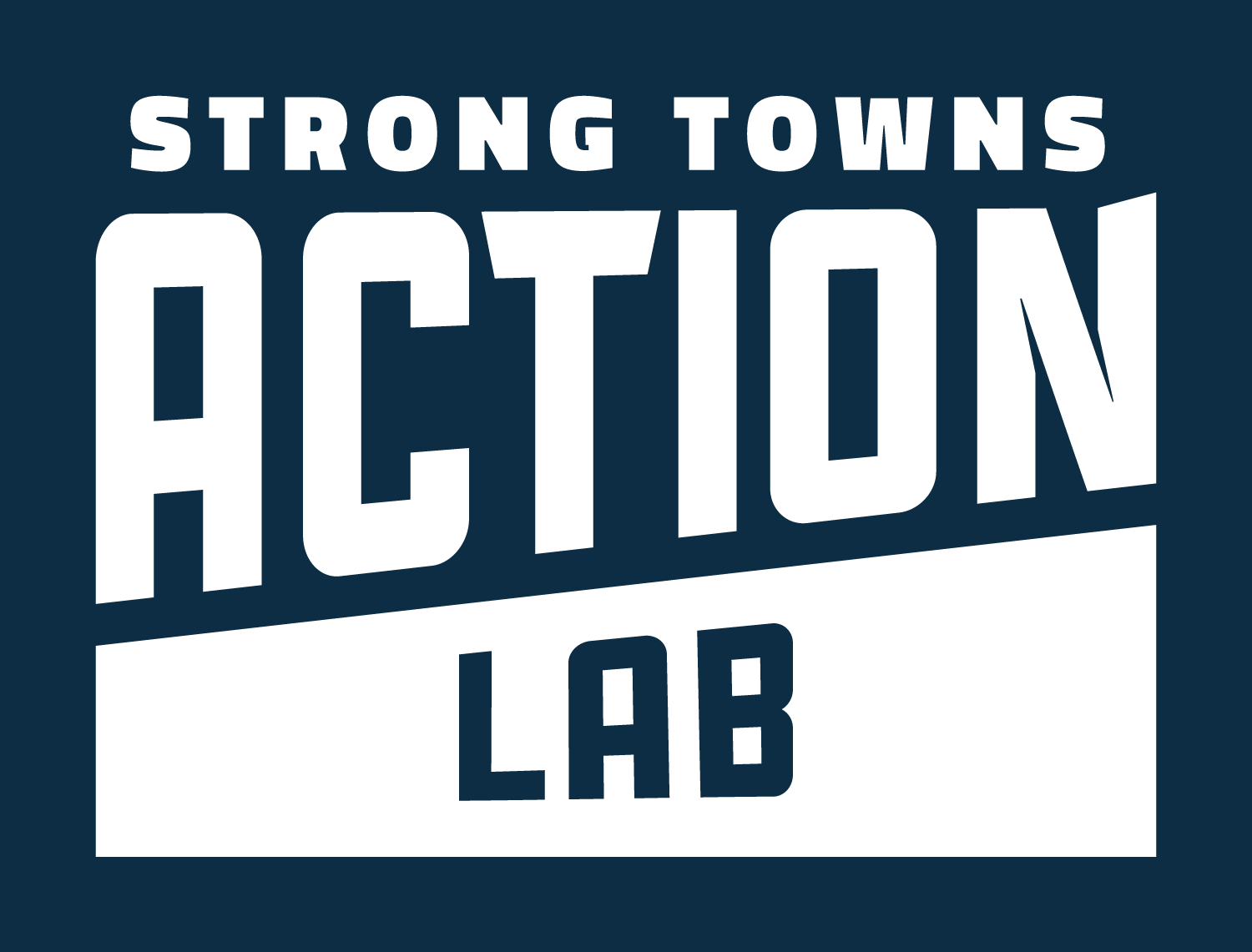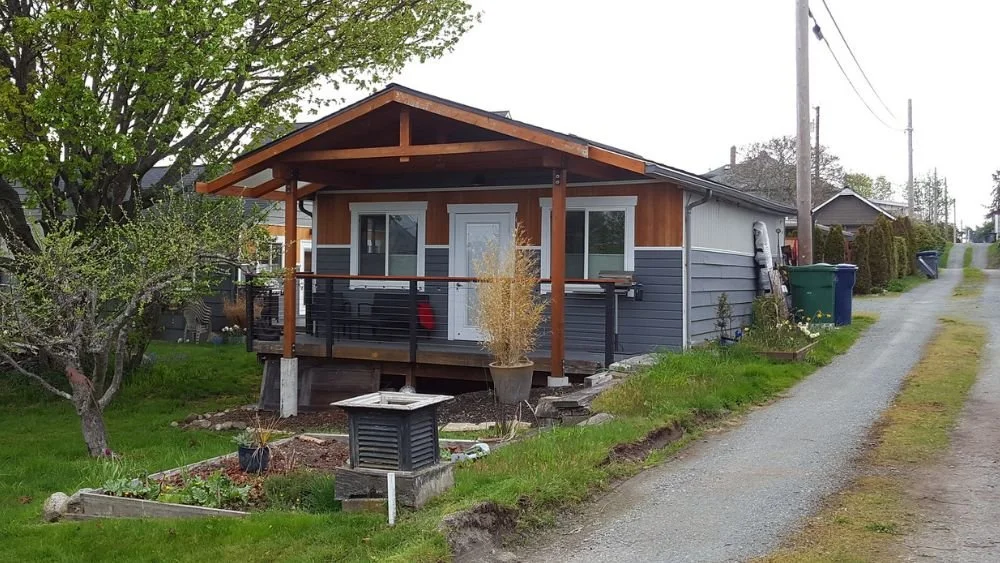The Strong Towns Approach
There are no universal answers to the complex problems America’s cities, towns, and neighborhoods face. There is no playbook. No civilization has ever transformed the living patterns of an entire continent the way we have. No civilization has even taken on so much debt—public and private—to keep it all going the way we have. No civilization has ever faced so many obligations that cannot be met as we now do.
And we did this all in two generations, a short blink of time compared to the thousands of years of human history spent building places in a different way.
What comes next? Nobody knows. There are less thoughtful people and organizations who will pretend that they do, that they have the solution and it’s really, really simple. We all know they are either trying to fool us or are simply fooling themselves. We’ve tried all the easy stuff; kicked the can down the road. We might have a little more road to go, but it’s getting harder and harder to avoid the tough decisions.
So how do we approach an uncertain future? How do we find our way through the complex challenges we face when there is no playbook?
I've written that the Strong Towns approach is not about telling you what to do, but instead how to think about what to do. A method of thinking not a method of doing. It’s a way to explore uncertainty and give yourself, and your community, the greatest likelihood of success.
A Strong Towns approach:
(Source: Unsplash.)
1. Relies on small, incremental investments (little bets) instead of large, transformative projects.
Our days of overwhelming our problems with affluence are waning. Trickle down—both the public and private versions—is a strategy of a different time and place. America’s cities have run out of money; it’s time to start thinking. Fortunately, we have a lot of good examples.
Software companies provide beta versions of their products with a tacit understanding that, while they may be a little buggy at first, the early release is part of the testing process. Businesses roll out products in limited markets to test the results before ramping up production. In the book Little Bets, author Peter Sims describes how low-risk actions can help us discover, test, and refine ideas.
We can apply this approach to the places where we live. The book Tactical Urbanism: Short-Term Action for Long-Term Change by Mike Lydon and Anthony Garcia is a how-to guide for making low-risk, high-return investments in a place. We identify the minimum viable project, get it up and running, see what happens, and then refine our approach. This is how we hack our way to success.
(Source: Unsplash.)
2. Emphasizes resiliency of result over efficiency of execution.
Americans have an obsession with efficiency, a byproduct of the Great Depression and World War II. There is no question that, faced with a specific existential threat, centralization of the economy allowed us to do astounding things in a short period of time. Business and government learned these efficiency lessons and put them to work rapidly transforming the continent in the generation following the war.
While governments have tended to cling to the silo/hierarchy model of efficiency, most businesses have been forced to adapt to flatter operating structures. This has happened for one simple reason: innovation. Efficient systems tend to resist change, the inertia of efficiency overwhelming the painful feedback that spawns innovation. If you resist change in the private sector, you tend to lose ground to those willing to innovate and change.
In a bigger sense, this is an application of Darwin. Success has never really been survival of the fittest but survival of the most adaptable. When we fine-tune our systems for efficiency of execution, those systems lose their adaptability. They become fragile and prone to failure. They lack resiliency.
A Strong Towns approach recognizes that success over the long term cannot be mass-produced through some efficient process. It must be built slowly and incrementally over time.
Suburbs are the ultimate example of spaces that are not adaptable to feedback. (Source: Unsplash.)
3. Is designed to adapt to feedback.
Cities prior to the Suburban Experiment were complex adaptive systems. They emerged from a collection of interacting objects, each of which experience feedback, are free to adapt their strategies based on their experience, and are influenced by their environment.
In our perceived affluence, we have bought ourselves relief from feedback. The suburban subdivision is the personification of this. Individual homes built to a finished state in isolation from all around them. Not only does this approach not have the ability to adapt and change over time—it’s not even an option that comes with this arrangement—it is a system where everyone new makes it worse for the people already there.
New people create more traffic. They crowd the parks and libraries. They tear down trees and reshape the landscape for their stuff. In the Suburban Experiment, new people make things worse, not better. It’s better then to simply not have new people. Better to not find a way to adapt over time. In the words of our board member, Ian Rasmussen, we’ve created the ultimate “bad party.”
We need to realize that systems that keep us immune from feedback are not free of problems; they simply cover them up. They put them off. When we get rid of the kind of feedback that forces us to change and adapt continuously in small ways, there is only one kind of failure option that remains: catastrophic.
A Strong Towns approach not only welcomes feedback, it favors systems that result in continuous, low-level stress so that any failures are early, small, and fixable.
Orderly but dumb: a “successful,” federally funded project to build handicap-accessible street crossings. (Source: Matthias Leyrer.)
4. Is inspired by bottom-up action (“chaotic but smart”) and not top-down systems (“orderly but dumb”).
Carlson’s Law states that “In a world where so many people now have access to education and cheap tools of innovation, innovation that happens from the bottom up tends to be chaotic but smart. Innovation that happens from the top down tends to be orderly but dumb."
We’ve been obsessed for decades with chasing the dollars we perceived at the edge of our communities that we have completely overlooked the pennies, nickels, and dimes waiting to be picked up in our core neighborhoods. To make this low-risk, high-return investments, we need to do two simple things: (1) Observe specifically where people struggle to live in the places we have built, and then (2) respond quickly with the minimum viable project that can make that struggle a little bit easier.
Repeat this process month after month and not only will the investments be low-cost, low-risk, and have a very high potential financial return, not only will the projects be making our cities wealthier and financially much stronger, they also can’t help but make people’s lives better in the process.
Instead of having a grand, top-down vision to reshape everyone else’s world in the way we think best, this is how we humble ourselves to learn from those around us. We will do much smarter things as a result.
(Source: Unsplash.)
5. Seeks to conduct as much of life as possible at a personal scale.
People are the indicator species of success. There is an overwhelming and indisputable correlation between places that attract human beings outside of an automobile and places that are financially productive. The more places we build that welcome people, the more financially successful we are going to be.
Building a productive place is an art and not a science. When we focus on the fine-grained details that improve the experience of someone on foot, now we are starting to get the essence of how to build a truly strong town.
(Source: Unsplash.)
6. Is obsessive about accounting for its revenues, expenses, assets, and long term liabilities (“do the math”).
Local governments budget year to year, yet they tend to be amazingly casual about debt and, even more so, about taking on long-term maintenance obligations. If we’re not doing the math, if we’re not asking the hard financial questions with each step we take, we’re doing a disservice to our fellow residents and the future generations who will inherit our choices.
In addition, when we don’t hold ourselves to a rigorous financial approach, we tend to descend into dogmatic thinking and start relying on our convenient urges instead of prudence. Cities are not collections of people serving the public balance sheet. Quite the opposite: The public balance sheet needs to serve its people. To ensure we’re doing this, we have to keep score. Rigorously and obsessively.
Learn More Core Strong Towns Insights
Visit our Action Lab, an easy-to-search collection of our best resources and most actionable content.











A new ordinance removes costly parking requirements across most of Chicago, clearing the way for more affordable housing and business development.